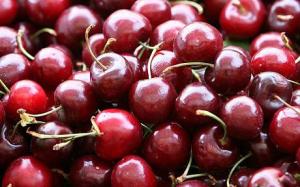 As summer finally arrives for most of the UK and we’re spending more time outside in the sunshine at Wimbledon, Glastonbury, or maybe just pottering around the garden, scientists in Chicago have been studying the potential anti-skin-cancer benefits of caffeine. The paper was a challenging read as it’s pretty much completely unrelated to what I spend my days doing but hopefully I’ve understood it enough to share a bit with you….
As summer finally arrives for most of the UK and we’re spending more time outside in the sunshine at Wimbledon, Glastonbury, or maybe just pottering around the garden, scientists in Chicago have been studying the potential anti-skin-cancer benefits of caffeine. The paper was a challenging read as it’s pretty much completely unrelated to what I spend my days doing but hopefully I’ve understood it enough to share a bit with you….
As you may already know from your bottles of Soltan, ultraviolet radiation B (UVB) rays are the main component of sunshine that can cause skin cancer. They do this by damaging the DNA in our skin cells – the damaged DNA is then recognised by the cell causing it to die. Problems happen when the cells containing the damaged DNA don’t die and instead, because of the damage caused by the UVB rays, they start to grow uncontrollably – this is cancer.
 In the paper, the scientists are studying the effects of caffeine on the different systems responsible for causing the cell to die, or not. To start with they fired UVB rays at some cells grown in the lab and measured how many of the damaged cells died. When they added caffeine to the cells, more of them died meaning the chance of damaged cells becoming cancerous would be less. When caffeine was added to cells which had not been fired with UVB rays it made no significant difference.
In the paper, the scientists are studying the effects of caffeine on the different systems responsible for causing the cell to die, or not. To start with they fired UVB rays at some cells grown in the lab and measured how many of the damaged cells died. When they added caffeine to the cells, more of them died meaning the chance of damaged cells becoming cancerous would be less. When caffeine was added to cells which had not been fired with UVB rays it made no significant difference.
One of the proteins responsible for the uncontrolled cell growth in cancer is called AKT – whose job it is to keep cells alive. Sometimes when skin cells are exposed to UVB rays, AKT is incorrectly ‘switched on’ which means cells are kept alive when they actually contain damaged DNA and should die. When caffeine was added to the cells that had been damaged by UVB rays the amount of AKT that was ‘switched on’ was much lower than when caffeine wasn’t added meaning these potentially cancerous cells will die (as they should).
This work has only touched on some of the many possible ways that caffeine may help prevent cancer, other systems are being studied and, as is common in science, some of them don’t agree with what was published here – maybe these scientists in Chicago are just trying to come up with an excuse to drink more coffee!! Importantly the paper only looks at cells grown in the lab and not as part of a whole animal or human – maybe the results would be completely different. Please note, I am by no means encouraging you to drink more coffee, as a decaffeinated person I would actually encourage the opposite 🙂


